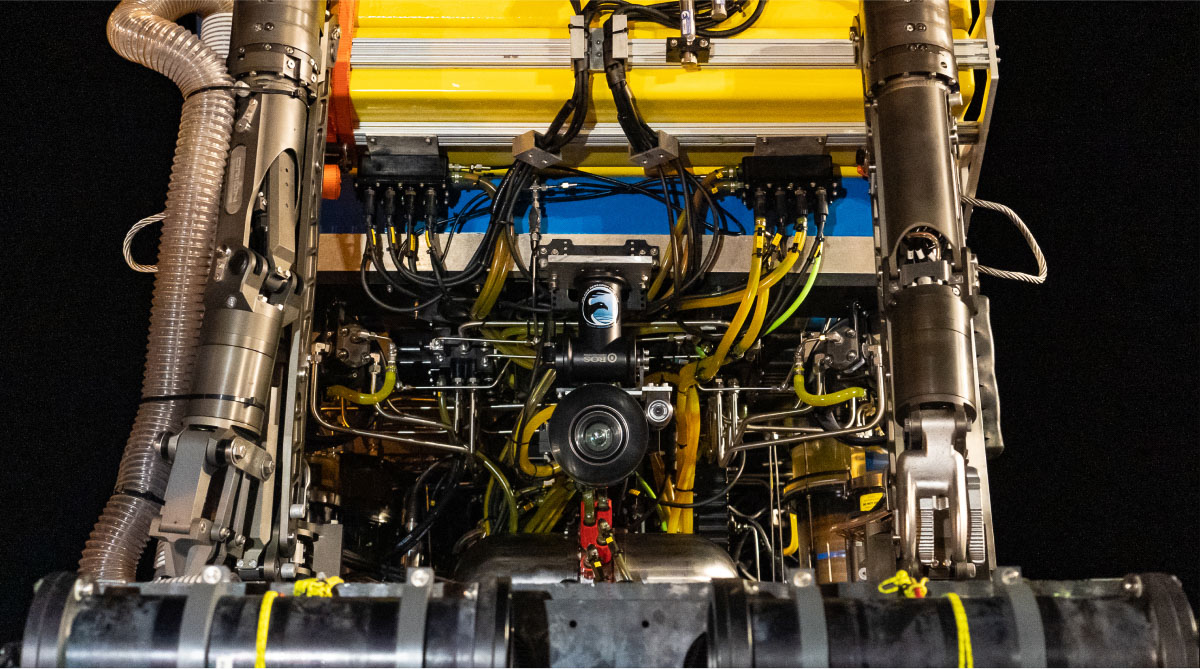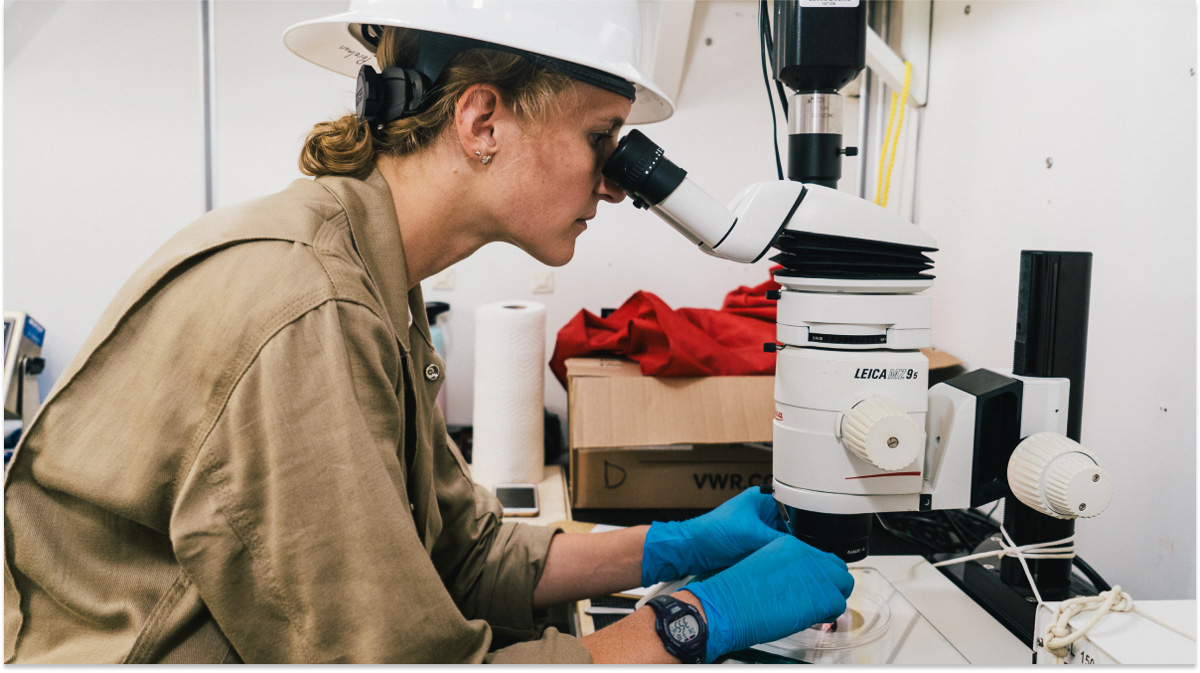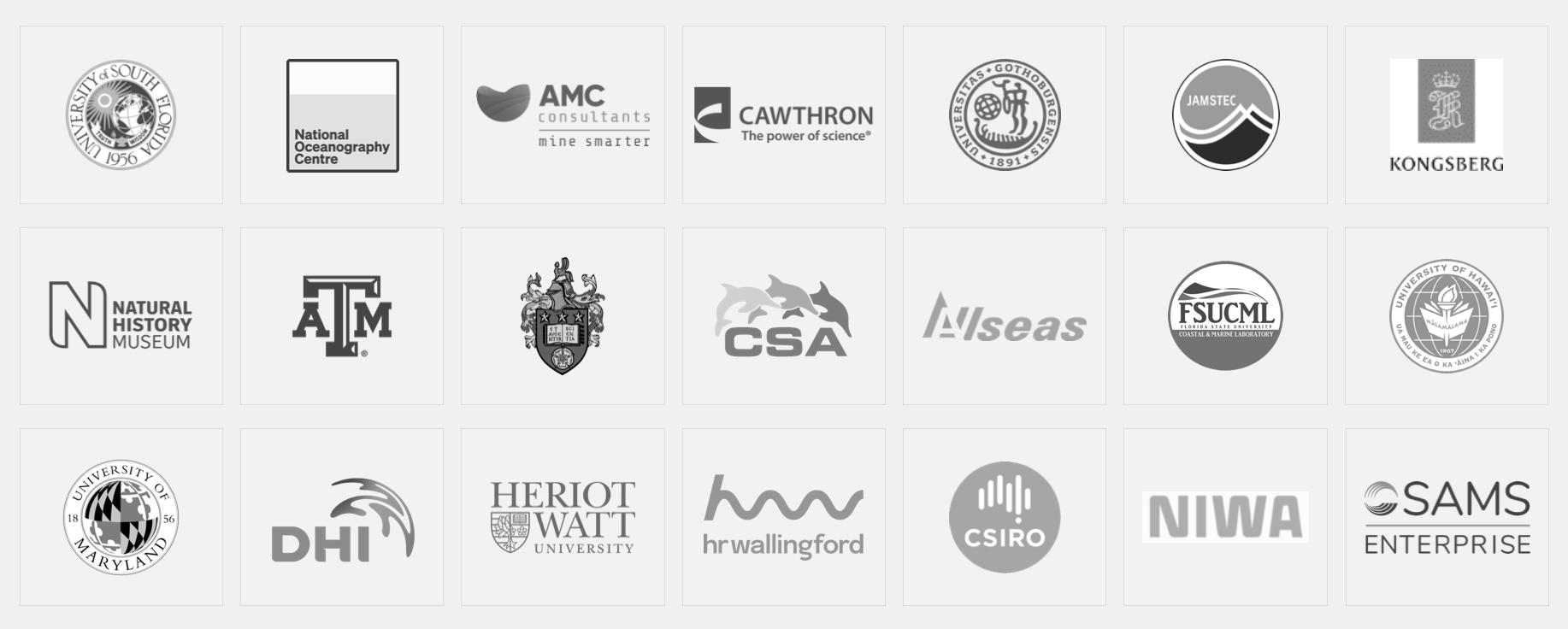
Research
The Metals Company is undertaking one of the most comprehensive deep-sea research programs in history, investing over $100 million as part of our Environmental and Social Impact Assessment (ESIA) program.
While the purpose of this seabed-to-surface program is to understand, predict, and mitigate wherever possible the impacts of collecting polymetallic nodules from the Clarion Clipperton Zone, the work is also laying the foundation for serious progress in the fields of deep-sea science, medicine, and ocean-operations monitoring. Done in conjunction with some of the world’s foremost independent experts in marine science, the data we’re collecting is being shared with the international community, and our deep-sea samples are being studied by labs around the world.
The insights we gain will continue to inform engineering decisions and help us develop technologies to collect polymetallic nodules with the lightest possible touch. These studies will come together to form a comprehensive Environmental Impact Statement, which we will present to the International Seabed Authority for consideration.
To understand the choices facing society as we move away from fossil fuels, we’re also undertaking leading-edge life-cycle assessments of the impacts of sourcing battery-grade metals for the clean energy transition. This research compares the cradle-to-gate impacts of sourcing metals from terrestrial mines with polymetallic nodules in the deep sea. Combining data across sectors and measuring specific impacts on people and the planet, we believe our findings will present a holistic analysis of a viable alternative to land-based mining.
To find out more about any of our research areas, get in touch.

“Where Should Metals for the Green Transition Come From?”
April 2020
White Paper
Human consumption and resource extraction have remade the world around us, and now the future livability of our planet is in question. In addition to population growth and rising living standards, the world must transition its energy, transportation, and industrial infrastructure away from fossil fuels, building tens of thousands of solar and wind farms, terawatts of energy storage capacity, and billions of electric car batteries. This requires a rapid injection of hundreds of millions of tons of key battery metals: nickel, cobalt, copper, and manganese.
How we get these metals, and how we use them to build batteries, will have an enormous impact. This in-depth life-cycle assessment study compares the cradle-to-gate impacts of two sources of metals—land ores and deep-sea polymetallic metals—in the transition to one billion electric vehicles by 2050. A cross-disciplinary study, it combines insights and data from the mining and manufacturing sectors, industrial and terrestrial ecology, and marine ecology to consider the clean-energy transition’s future costs to people and the planet.
Lead researchers Daina Paulikas (University of Delaware) and Dr. Steven Katona (Ocean Health Index, Conservation International) found that sourcing battery metals from polymetallic nodules, rather than from terrestrial mines, would significantly reduce impacts with regard to climate change, nonliving resources, biodiversity and biomass, and measures of social and economic wellbeing. This research suggests that society can source metals for the clean-energy transition responsibly, ethically, and with a minimal emissions load on the planet through deep-sea nodule collection. The impacts of human resource extraction are global and systemic, and minimizing further impacts requires thinking about future resource development needs in global and systemic ways.
“Life-cycle climate change impacts of producing battery metals from land ores versus deep-sea polymetallic nodules”
Published in Journal of Cleaner Production, December 2020
Carbon Paper
“Life-cycle climate change affects of producing battery metals from land ores versus deep-sea polymetallic nodules,” published in Journal of Cleaner Production, December 2020.
Polymetallic nodules represent a new, abundant, and high-grade source of metals poised for availability in the near future. As the world rushes to replace fossil fuels with renewable sources of energy, it will require a rapid injection of battery-grade metals for storage and transportation needs. This peer-reviewed study provides a comparative life-cycle assessment of electric-vehicle battery metal sources, quantifying the direct and indirect emissions and disruptions to carbon sequestration by the mining, processing, and refining of battery metals.
Researchers Daina Paulikas (University of Delaware), Dr. Steven Katona (Ocean Health Index, Conservation International), Erika Ilves (The Metals Company), and Saleem H. Ali (University of Delaware) found that producing battery metals from nodules can reduce active human emissions of CO2 by 70-75%, stored carbon at risk by 94%, and disruption of carbon sequestration by 88%. Their supply chain analysis also found that polymetallic nodules can deliver metals for one billion EV batteries with up to 11.6 gigatons less CO2. This represents a significant potential saving, given the remaining carbon budget of just 235 gigatons, and would realize a 66% probability of staying at 1.5°C of warming.
This focus on carbon’s climate change impacts builds upon our white paper, above, which compares a range of social and environmental impacts.
“Deep-sea nodules versus land ores: A comparative systems analysis of mining and processing wastes for battery-metal supply chains”
Published in Journal of Industrial Ecology, January 2022
Waste Paper
This peer-reviewed study provides a preliminary material flow analysis of global-average cradle-to-gate waste streams using either nodules or terrestrial sources as part of a preliminary life cycle assessment, as well as integrated risk assessments of those waste streams.
Researchers Daina Paulikas (University of Delaware), Dr. Steven Katona (Ocean Health Index, Conservation International), Erika Ilves (The Metals Company), and Saleem H. Ali (University of Delaware) found that producing four key battery metals (nickel, copper, cobalt, manganese) from seafloor polymetallic nodules could reduce lifecycle solid waste by 59-93% compared to land ores. Modelling solid waste streams over the lifecycle of metal production and using a wide range of production pathways for both land ores and nodules, the researchers’ analysis showed that producing EV battery metal feed stocks from land ores would on average generate over 270 kg of waste per every kg of nickel and 460 kg of waste per every kg of copper while nodule-derived values would be 83 and 29 kg of waste, respectively.
This focus on the implications for waste generation when sourcing battery metals builds upon our white paper, above, which compares a range of social and environmental impacts.
Our Partners


